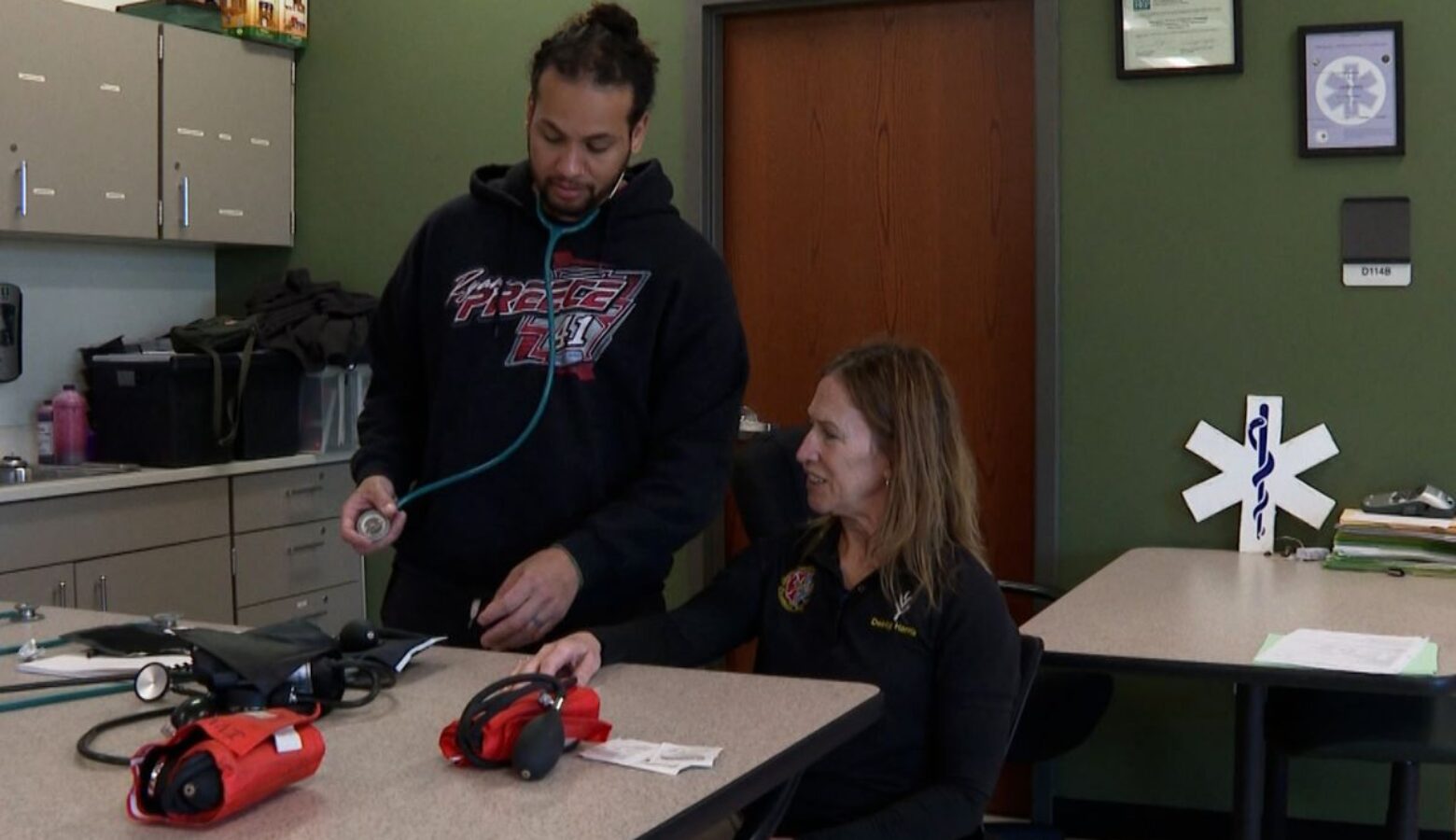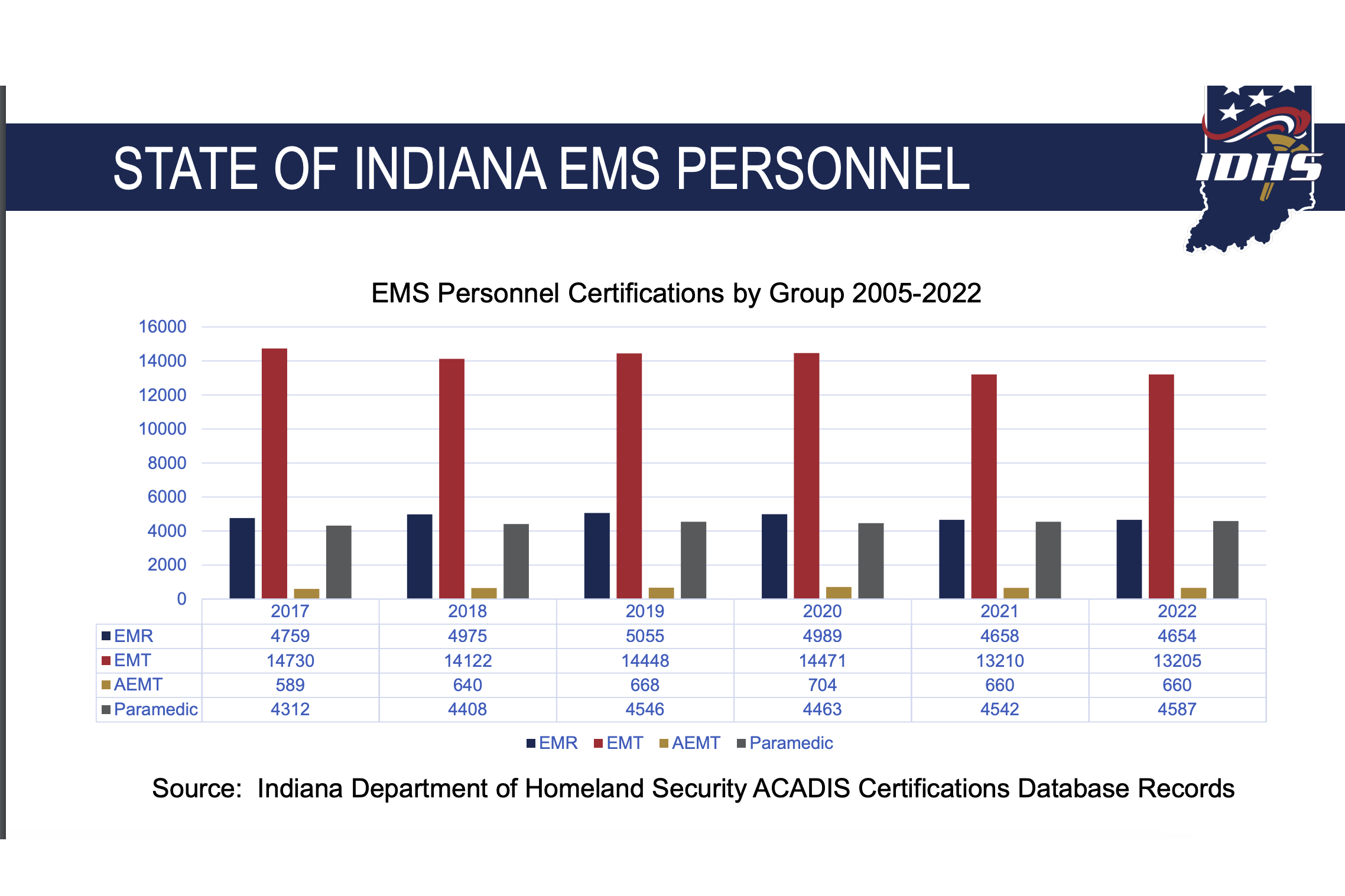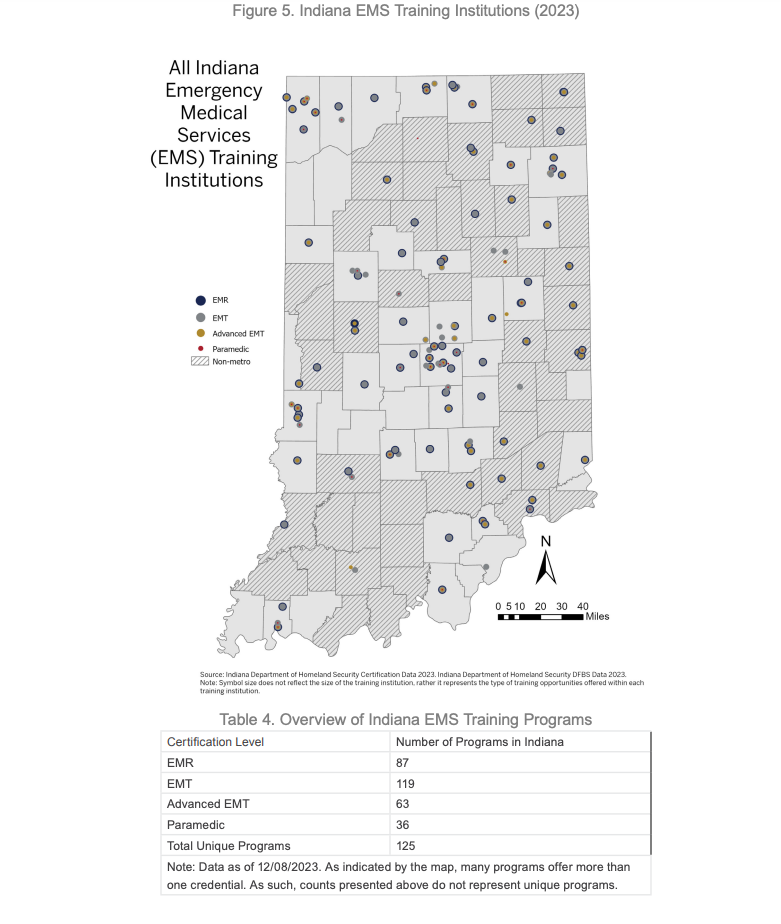State officials aim to tackle shortage of EMTs and paramedics through training grants

It’s a Thursday morning at Ivy Tech Bloomington. About ten students gather around a couple tables, and review how to check someone’s vitals.
Part of an Emergency Medical Technician course, they’ll take a test with Ivy Tech. If they pass, they can take a certifying test with the National Registry of EMTs.
If numbers track with last year, they’ll be among approximately 15,000 people who receive EMS training and certification in Indiana.
But that’s not enough to fill the state’s need, according to Keith Rademachir, Ivy Tech Bloomington’s assistant chair of paramedic science.

Last year, Indiana recorded more than 1.2 million EMS incidents in the state. And most people with EMS certification don’t work in an ambulance.
Rademachir has worked as a paramedic for decades and provides training at Ivy Tech. He said the need for EMTs isn’t new but has become apparent with rising call volume and rural healthcare deserts.
“The shortages are causing ambulances to go unstaffed or understaffed every day,” he said.
If the shortage continues, he said people will go without service for longer, waiting for an ambulance to be available.
“What it really costs is time,” Rademachir said. “Instead of a five minute response time, you may be looking at 20 to 30 minutes or longer.”
Ambulance run volume increased from approximately 750,000 a year in 2018 to 1.2 million runs a year by 2022, according to the state EMS workforce shortage 2022 report.
Read more: Ambulance providers say payment issues worsen access. Bill sets out-of-network rates
While need jumped, the number of people getting EMS certifications has remained stable over the years, according to the state’s EMS director Kraig Kinney.
“EMS has existed since the 1970s. It existed, and people take it for granted, ‘I’m going to call 911, I will get an ambulance.’”
Turnover is higher in the profession now, Kinney said. People don’t renew their certifications after five or six years. Wages and high stress, ambulance run reimbursement, and access to training all take a toll on retention.
But Kinney said now is an exciting time for EMS in Indiana, and he feels optimistic.
It restructured at the state level last year and is now its own division within the Department of Homeland Security. This means more recognition from the legislature and working closer with the governor’s office.
The state allocated $6.4 million to Emergency Medical Services for both the 2024 and 2025 fical year to address need gaps, as part of the governor’s public health commission in 2022.
Read more: Why are Indiana’s ambulance costs so high?
Kinney said this type of funding, specifically addressing EMS shortages, is something it’s never had before. One area of focus is tracking workforce data on EMS training and EMS incidents.
The other is lowering barriers to certification through workforce readiness grants — about $1.4 million allocated for 2024 to covering student EMS course work.
“There are deserts, where you can have five or six counties that joined, may not have any training that’s provided, particularly at the paramedic level,” he said. “[Training] is a little more common at the EMT level, but there are still many counties that don’t have EMT training.”
Per the 2023 EMS workforce assessment, 61 of Indiana’s 92 counties provide some level of training.

The state EMS office is also allocating another $1.5 million for equipment grants that training programs can apply for, with a preference to programs in rural areas.
In the last three years, Ivy Tech Bloomington graduated around 230 EMTs and 30 paramedics. It has expanded its training out to five surrounding counties. Karly Wyatt said the funding for EMS education from the state is helpful in recruiting.
“Students don’t have to go into debt and they can continue to get their education paid for,” Wyatt said. “I think that that’s a huge benefit. And it’s a huge help to us in promoting our program.”
Between 70 to 80 percent of students in Ivy Tech Bloomington’s EMT and paramedic programs use Next Level jobs funding each semester, according to Wyatt.

